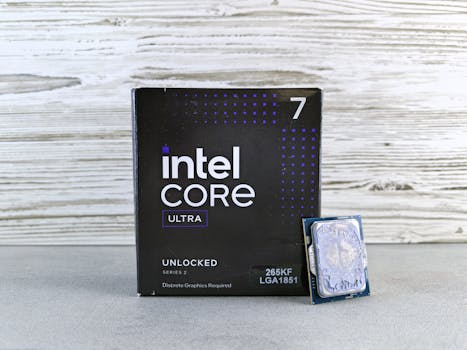The tech world is buzzing! Intel and NVIDIA, two giants in the industry, are reportedly collaborating on x86 hardware development, potentially reshaping the future of CPUs and GPUs. This partnership could lead to groundbreaking innovations and challenge the current market landscape.

The tech industry is constantly evolving, and sometimes, the most unexpected alliances emerge. Recent reports suggest that Intel and NVIDIA, traditionally competitors in the CPU and GPU markets, are joining forces to push the boundaries of x86 hardware. This collaboration, if realized to its full potential, could revolutionize computing as we know it. Let's delve into the details of this potential partnership and explore its implications.
Why This Collaboration Matters
The x86 architecture has been the backbone of personal computing for decades. Intel's dominance in CPUs and NVIDIA's leadership in GPUs have shaped the industry. However, the rise of ARM-based processors and the increasing demands of AI and machine learning are pushing the limits of traditional x86 architectures. A collaboration between Intel and NVIDIA could address these challenges by combining their expertise and resources.
# Addressing the Challenges of Modern Computing
- Performance Bottlenecks: Modern applications, especially those involving AI and gaming, require immense processing power. Current x86 architectures sometimes struggle to keep up. A joint effort could lead to more efficient and powerful processors.
- Power Consumption: As computing becomes more mobile and energy-conscious, power efficiency is crucial. Intel and NVIDIA could develop x86 hardware that delivers high performance while minimizing power consumption.
- Competition from ARM: ARM-based processors are gaining traction, particularly in mobile devices and data centers. A revitalized x86 platform could better compete with ARM's advantages in power efficiency and specialized processing.
# A Synergistic Partnership
Intel brings its expertise in CPU design, manufacturing, and x86 architecture. NVIDIA contributes its strengths in GPU technology, AI acceleration, and software development. By combining these strengths, the two companies could create a synergistic platform that surpasses the capabilities of either company alone.
Potential Outcomes and Innovations
This collaboration could lead to several exciting innovations in x86 hardware. Here are a few possibilities:
# Integrated CPU-GPU Architectures
Imagine a processor that seamlessly integrates a powerful CPU core with a high-performance GPU, all on a single chip. This could significantly improve performance in tasks like gaming, video editing, and AI inference. Apple's M-series chips offer a glimpse into the potential of integrated architectures, and an Intel-NVIDIA collaboration could take this concept even further.
Example: Consider a laptop designed for gaming. An integrated CPU-GPU could eliminate the need for a discrete graphics card, reducing power consumption and improving battery life without sacrificing performance.
# Enhanced AI Acceleration
NVIDIA's GPUs are already widely used for AI training and inference. By integrating NVIDIA's AI acceleration technology directly into Intel's CPUs, the collaboration could create a powerful platform for AI-powered applications. This could benefit a wide range of industries, from healthcare to finance.
Example: Imagine a medical imaging application that uses AI to detect diseases. An Intel-NVIDIA processor could accelerate the AI algorithms, enabling faster and more accurate diagnoses.
# Optimized Software Ecosystem
Both Intel and NVIDIA have extensive software ecosystems. By working together, they could optimize software for their new x86 hardware, ensuring that applications run smoothly and efficiently. This could attract developers and encourage the adoption of the new platform.
Example: Game developers could optimize their games to take advantage of the integrated CPU-GPU, resulting in improved graphics and performance.
Challenges and Considerations
While the potential benefits of an Intel-NVIDIA collaboration are significant, there are also challenges to consider:
# Competition and Antitrust Concerns
A partnership between two dominant players in the CPU and GPU markets could raise antitrust concerns. Regulators may scrutinize the collaboration to ensure that it does not stifle competition.
# Integration Complexities
Integrating CPU and GPU architectures is a complex engineering challenge. Intel and NVIDIA would need to overcome technical hurdles to create a seamless and efficient platform.
# Market Dynamics
The success of the collaboration will depend on the overall market dynamics. The rise of ARM-based processors and the emergence of new competitors could impact the demand for x86 hardware.
The Future of x86 Computing
An Intel-NVIDIA collaboration could mark a significant turning point in the history of x86 computing. By combining their strengths and resources, the two companies could create a platform that is more powerful, efficient, and versatile than ever before. This could lead to groundbreaking innovations in a wide range of applications, from gaming and video editing to AI and scientific computing. While challenges remain, the potential rewards are immense.
Conclusion
The rumored partnership between Intel and NVIDIA has the potential to reshape the landscape of x86 computing. By addressing the challenges of modern computing and leveraging their respective strengths, the two companies could create a new generation of processors that deliver unprecedented performance and efficiency. The future of x86 hardware may be about to enter a new and exciting era.
